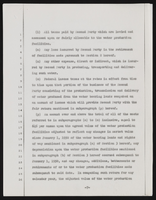Search the Special Collections and Archives Portal
Search Results
Florence Lee Jones and John Cahlan Papers
Identifier
MS-00200
Abstract
The Florence Lee Jones and John Cahlan Papers (1929-1983) contain material created by the couple related to their work at the
Archival Collection
Pagination
Refine my results
Content Type
Creator or Contributor
Subject
Archival Collection
Digital Project
Resource Type
Year
Material Type
Place
Language
Records Classification









